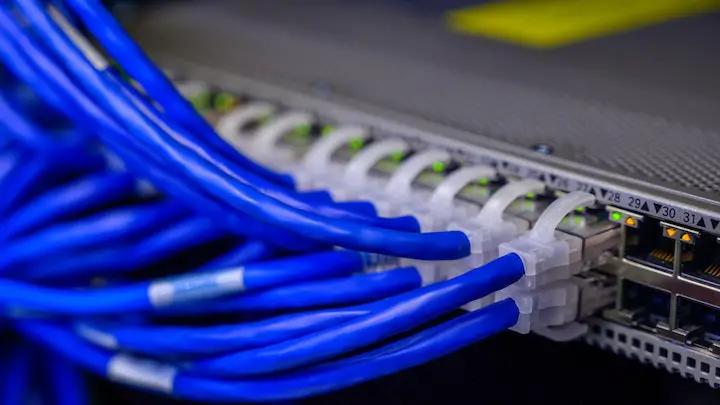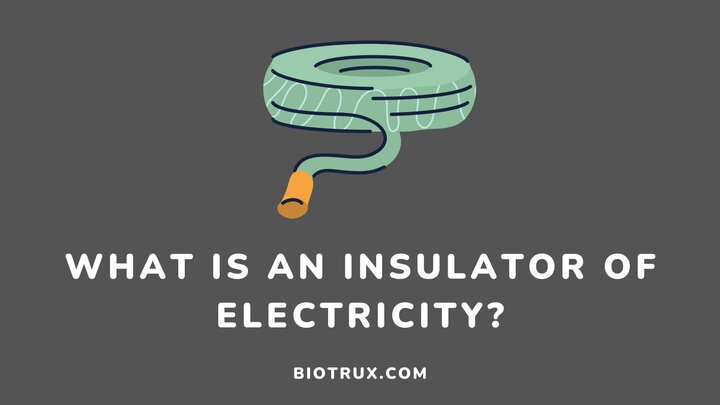An electric insulator is any material that does not allow the free flow of electricity. Essentially, they restrict the flow of electrons from one atom to another by maintaining a stable shape under an electric field.
Examples of common insulators are glass, paper, air, and plastic. These materials are useful in protecting us from electrical hazards, which is a significant reason why rubber embodies the coils or metals in wires.
The term “insulators” can also describe thermal (heat) conduction. Materials that respond positively to heat are called “conductors,” while their counterparts are called “insulators.”
In this guide, you will find out the major properties of electrical insulators, their types, common examples, and factors that affect their resistivity.
Key Properties of Electrical Insulators
For a material to be an insulator of electricity, it must possess the following:
1. High resistivity
Good insulators of electricity possess high electrical resistivity or low electrical conductivity. Electrical resistivity measures how much electricity can pass through a material.
2. Dielectric strength
Dielectric strength is a measure of the electrical strength of an insulator. The maximum voltage must be applied for an insulator to become a conductor of electricity. Hence, materials with very high dielectric strengths are better insulators.
3. Band gap sizes
A large band gap generally separates electrons in the valence band of insulators. This large (forbidden) gap blocks electrons from jumping from the valence band to a conducting band. When there are not enough electrons in the conduction band of any material, it will not conduct electricity.
4. Air permeability
Air permeability measures how much a material can allow air to flow through its pores. Since air is a good insulator of electricity, electrical insulators have enough room for them. In other words, insulators have high air permeability.
Types of Electrical Insulators

There are different types of electrical insulators. Common ones include:
1. Pin-type electrical insulators
Pin-type electrical insulators are most appropriate for supporting low voltage. A single one can support about 11kV while a double piece can hold on to about 25kV. Their shell is often made of porcelain.
2. Suspension-type electrical insulators
Suspension-type insulators support high-voltage transmission lines. Their construction often depends on the weather condition and the degree of voltage.
3. Strain insulator
This is similar to suspension-type insulators. However, its specifications and mode of operation are slightly different. For context, it can support a voltage capacity of 33kV and takes a bending shape over transmission lines.
Other insulators include disc insulators, stray insulators, shackle insulators, and post insulators, to name a few.
Common Insulators and their Electrical Resistivity
Electrical resistivity measures the level of resistance a material displays against the flow of electricity. In most cases, this value approximately ranges from 1010 to 1016. Below is a table indicating common insulators and their electrical resistivity.
| Insulators | Electrical Resistivity (Ω⋅m) |
| Glass | 10 x 1010 to 10 x 1014 |
| Rubber | 1013 |
| Wood | 1014 to 1016 |
| Air | 1.3 x 1016 to 3.3 x 1016 |
| Plastic | 1016 to 1017 |
Factors That Affect the Electrical Conductivity of Insulators
Insulators naturally do not conduct electricity. However, some conditions can make them conductive. They include:
1. Temperature
An increase in temperature reduces the resistance coefficient of an insulator. This is because thermal motion increases and there is a significant migration of ions. Hence, when an electrical insulator is exposed to extreme temperatures, it gradually loses resistance.
2. High voltage or electric field
This works very similarly to how temperature affects insulation or resistance coefficient. An increase in an electric field’s intensity also increases ionic mobility.
In other words, the movement of ions in such materials changes from linear to exponential. Therefore, every insulator will conduct when the right voltage is applied.
3. Impurities
The presence or addition of impurities to an insulator reduces the electrical resistivity of any insulator. This is why a certain degree of insulation or strong insulation is often used to describe the purity of a material.
Uses of Electrical Insulators
Insulators protect humans against electrical hazards such as electrocution or burns. Most homes and companies utilize them for:
- Stopping the production of high voltage in electrical systems as seen in circuit boards.
- Reducing or regulating energy costs or bills.
- Coating wires or electric poles on the street.
- Soundproofing appliances.
- Improving process performances and longevity of electrical devices.
- Emission protection from environmental pollutants.
FAQs
What is the best insulator for electricity?
The most effective electrical insulators are glass, oil, air, diamonds, dry cotton, and pure water.
What is the most common insulator?
Fiberglass is the most common type of insulation. They come in batts or rolls and are also found in wool, plastic, and natural fibers.
What are insulators also called?
Other names for insulators are non-conductors or dielectric materials.
Metals that poorly conduct electricity such as bismuth or tungsten can also be tagged insulators in some cases.
Conclusion
Electrical insulators like rubber, plastics, air, and paper are materials with high resistivity. They naturally serve as insulators or act as dielectrics in capacitors. Wires usually come with color codes for easy identification of functions.
However, there is no perfect insulator. All insulators will conduct under the right voltage. This voltage is known as the breakdown voltage of an insulator but does not guarantee that such insulators will conduct better than metals like copper or gold.
I hope you found this guide helpful. To better understand why no insulator is perfect, please see my guide on if rubbers are conductive.
Thank you for reading.

